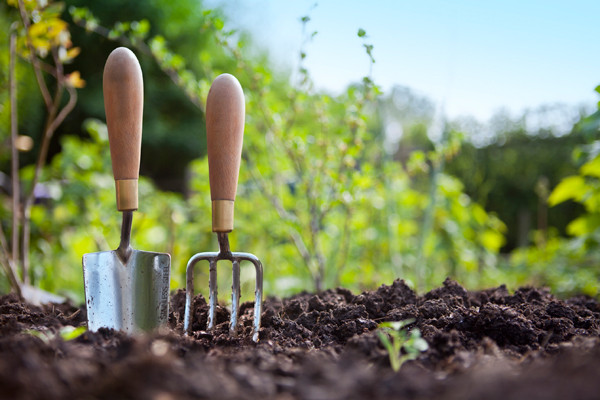Green Fingers
April is full of those perfect early spring days when the sun is shining, the air is clear and you just want to get out into the garden and enjoy it.
Clip over winter-flowering heather with shears now that they have finished flowering. This will dead head and tidy them up in one job. Prune hydrangeas lightly, just a little deadheading really.
The spent flower heads from last year were left on to provide some frost protection for the new buds.
Before you cut anything, look over the plant. There are two kinds of shoots: The ones with the remains of last year’s flowers on them and the unflowered shoots which will have a fat growth bud at the tip. Follow the flower shoots back down to a strong healthy side shoot and cut just above it. Don’t cut the shoots with the fat green buds, these are this season’s flowers.
Lime
Acid-loving plants such as hydrangea, azalea, camellia, rhododendron and ceanothus may develop pale green or yellow leaves if grown in soil that contains lime. This is lime-induced chlorosis and is prevented by seeding in April with sequestered iron.
This allows the plant to access the vital nutrients and minerals that are locked up in the soil by the lime. Chlorosis of the lower leaves of plants is often due to bad drainage.
Now that daffodils have finished their show for another year, the temptation is to tidy them up. Don’t – just deadhead them by twisting and pulling the spent flower heads off.
These produce seeds that are not viable, as in most modern daffodils the ability to reproduce by seed has been bred out of them. It’s just wasting the bulb’s energy.
Spring flowering bulbs are now recharging their batteries. Their leaves are taking in sunlight and converting it into starch. This starch is stored in the bulb, ready to power next year’s show of flowers. Don’t cut them or tie them up in bundles, they need to get the maximum amount of sunlight that they can.
Deprive them of it now and next year all you will have is leaves and no flowers. Wait for at least six weeks to cut then to improve next year’s show. Feed them with a high-potash feed or even a general purpose feed.
Evergreens
April is the best month to plant or move evergreens and conifers. Dig up as big a rootball as you can manage. The rootball will usually be wider than it is deep.
The fine feeder roots around the edge of the mass are the most important, as these are the ones the plant uses to take up water.
When replanting, turn the plant so it faces the same direction as it was in the original position. Evergreens don’t like being reorientated once growth is underway. Water it regularly during its first year to help it get established.


 Paul Gargan
Paul Gargan